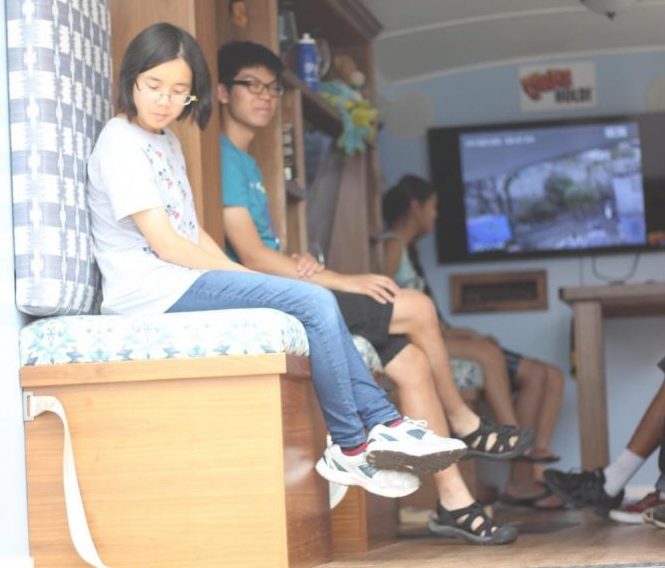Campus Safety brought an earthquake simulator to Fluor Fountain on Oct. 2 to better prepare students who were unaccustomed to earthquake-prone Southern California.
All students were welcome to participate in the 18-second simulation of a 6.7 magnitude earthquake. Big Shaker Enterprises, which supplied the simulator, also gave the first 120 students earthquake survival kits.
The simulation was housed inside a trailer with a setup similar to a typical American home. The furniture arrangement was complete with a sofa and a few reading chairs, as well as a television, table and shelving topped with stuffed animals. This setup allowed participants to learn how to use their everyday surroundings for protection and how to avoid falling objects.
During the simulation, students sat in the trailer on the provided couches and chairs as an instructor informed students about the importance of covering their head and neck. The instructor also emphasized finding protection near sturdy objects like a table, a desk or even a wall. The simulation began while the speaker was still giving instructions in order to show that earthquakes can occur at any time without warning or time to prepare.
This is the second year that Campus Safety has brought the earthquake simulator to Biola. Both years the event was well-attended by students who had never experienced earthquakes, as well as some earthquake veterans. Campus Safety emergency operations manager Carissa Arringo shared that many students who had experienced earthquakes before were surprised by how realistic the simulation was. Students who had never experienced an earthquake appreciated the simulation for preparing them for any future experiences with earthquakes.
“Students get knowledge on how to protect themselves… if or when an earthquake occurs―always stop, drop and hold on,” Arringo said. “Even getting one or two students to pay attention is important.”
Freshman undeclared major Cheristin Bhola, who participated in the earthquake simulator, said she had experienced minor earthquakes before from growing up in California. However, she had never felt a quake at the magnitude of the simulator and was reminded of the importance of covering her neck and head.
“I didn’t expect them to start it when they do, so it’s kind of that surprise factor,” Bhola said. “I have to remember exactly what they told me to do like 10 seconds ago. It was a good reminder, because usually I don’t think about covering my neck and head.”For students that were unable to participate in the earthquake simulation, information about protection during an earthquake is available in the emergency response guidebook, which is available in all dorm rooms and can be downloaded through the Biola website.








